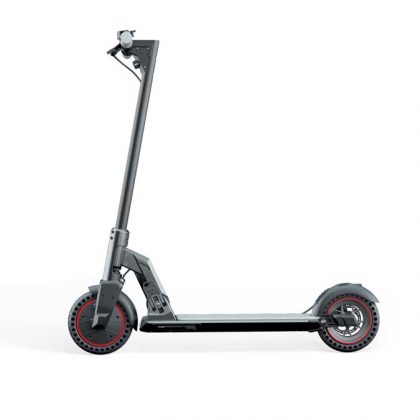Today, as markets become more unstable, companies are obligated to create a sustainable business model and implement environmental and social initiatives that will benefit future generations as well as create long-term value for stakeholders.
Now more than ever, organizations need to recognize the value of transparency in reporting by disclosing non-financial information through sustainability reports. Sustainability reporting is no longer just a nice-to-have program but has been elevated as a requirement for publicly listed companies (PLCs).
GOVERNMENT MANDATE FOR SUSTAINABILITY REPORTS
On Feb. 18, 2019, the Securities and Exchange Commission (SEC) released Memorandum Circular (MC) No. 4, series of 2019, under the title Sustainability Reporting Guidelines for Publicly-Listed Companies, specifying the procedure for sustainability reporting in the Philippines. They require all PLCs to submit a sustainability report as part of their annual report each year.
The Commission said this requirement will help companies assess and manage their contributions towards the attainment of the 2030 United Nations Sustainable Development Goals (UN SDGs) and the Philippine Development Plan 2017-2022 or Ambisyon Natin 2040.
The first report was scheduled for submission in 2020, attached to the company’s 2019 Annual Report. For companies already producing sustainability reports in accordance with internationally-recognized frameworks and standards, their reports were considered sufficient compliance with the reporting requirement.
The guidelines also mandate a “comply or explain” approach for the first three years upon implementation. This means that companies need to disclose specific non-financial information using a suggested SEC template or a standalone report attached to their Annual Reports. They can also provide explanations for required data that companies are unable to provide. Companies failing to adhere to the guidelines are subject to the penalty for Incomplete Annual Report provided under SEC MC No. 6, Series of 2015, Consolidated Scale of Fines.
With the new regulation emphasizing the growing importance of non-financial disclosures, SGV conducted a review of how PLCs responded to the SEC requirement to publish sustainability reports and shared our findings in a study, Beyond the Bottom Line: Sustainability Reporting in the Philippines.
The report reviewed 73 PLCs that submitted sustainability reports for the financial year ending Dec. 31, 2019, with the demographic based on the number of PLCs within an industry, information from industry briefings, and changes to local industry regulations. It also included nine listed holding firms that had been reporting on sustainability and non-financial information before the SEC requirement. The study was limited to publicly available information, such as the SEC sustainability templates appended to SEC Form 17-A, standalone sustainability reports, integrated reports and annual reports.
The report also leveraged EY sector trends, the World Economic Forum’s Global Risks Report 2020 and SGV’s experience in supporting businesses in sustainability and non-financial reporting.
WIDELY USED SUSTAINABILITY REPORTING STANDARDS AND PRACTICES
Key findings from the study suggest that 64% out of the 73 companies reviewed used the reporting template provided by the SEC to ensure compliance on the first year. However, more organizations will likely transition to stand-alone or integrated reports moving forward. Of the PLCs assessed, 40% released stand-alone sustainability reports, while 30% disclosed sustainability information as part of their Annual Reports. Moreover, only a small percentage released Integrated Reports, which included financial and non-financial disclosures. These reporting formats are not mutually exclusive, as some PLCs disclosed their non-financial information using more than one reporting format.
Among the PLCs submitting stand-alone reports, the most widely referenced or adopted sustainability reporting standard was the Global Reporting Initiative (GRI) Standards. Companies also used other frameworks or standards, like Sustainability Accounting Standards Board (SASB), Integrated Reporting (IR) Framework and Task Force on Climate-related Financial Disclosures (TCFD), to address other topics like climate change or industry-specific material sustainability topics.
Further, only 11% of the PLCs obtained independent external assurance, all of which had limited assurance. Notably, obtaining assurance on non-financial information, while not required, is considered a global best practice. In fact, according to the EY Climate Change and Sustainability Services (CCaSS) investor survey, 75% of investors see independent assurance of a company’s processes and controls over sustainability reporting as “valuable” or “very valuable,” in addition to the 70% who say the same for non-financial and environmental, social, and governance (ESG) performance measures.
ADDITIONAL INSIGHTS ON SUSTAINABILITY REPORTING PRACTICES
Another significant outcome observed was the focus on the UN SDGs, with 77% of the sustainability disclosures linked to the SDGs, and 45 PLCs using the SDGs to inform about their sustainability strategy, materiality assessment process and/or material sustainability issues. Incorporating the SDGs in a company’s sustainability strategies ensures that their products, services and programs contribute to attaining the global sustainability goals.
Moreover, 60% established the scope and boundary of their reports while only 52% disclosed their materiality assessment process, or the method used to determine the sustainability issues material to the company and their stakeholders. Material sustainability issues are the key focus areas addressed by a company and relevant information or plans in these areas are included in its sustainability report. Stakeholder engagement is an important part of the materiality assessment process to demonstrate that companies listen to their stakeholders and address their concerns.
Meanwhile, only 32% disclosed having sustainability governance in place, which is not surprising since sustainability reporting is relatively new to the country. However, as sustainability issues continue to take center stage in developing business strategies, business leaders should consider having a member of management spearhead sustainability within the organization.
On specific disclosures, Occupational Health and Safety (OHS) was the most disclosed topic by PLCs, while the least discussed were environmental topics. This presents an area for improvement for PLCs as they will not be able to fully address their ESG impacts, risks and opportunities without measuring or reporting on environmental topics.
REITERATING THE SIGNIFICANCE OF NON-FINANCIAL REPORTING
The report reveals that the first year of reporting focused more on compliance. However, it still met the objective of creating awareness and inclusion of sustainability on the board and management agenda. Due to the impact caused by the pandemic, it is very likely that the 2020 sustainability reports will heavily focus on health and safety, with pandemic response programs such as Department of Labor and Employment (DoLE)-mandated safety protocols, testing and vaccinations getting reported as part of ESG concerns. We also expect more robust disclosures on climate-related matters such as decarbonization, baselining energy consumption and air and greenhouse gas emissions.
In addition, PLCs can improve their reporting on topics such as waste management to address pressing global concerns; resource management, specifically of materials and water, since unhampered consumption is not sustainable; and the protection and rehabilitation of biodiversity and ecosystems affected by operations to minimize negative environmental impact. Another area which may be improved further is social issues, particularly privacy and data security, after the pandemic rapidly shifted professional communications into the digital space.
After the initial year of compliance with the new SEC requirement, PLCs will hopefully realize the significance of non-financial reporting and develop strategies that incorporate global and national development goals. By measuring and addressing their current sustainability impacts, risks and opportunities, they can help create long-term value for stakeholders, and at the same time, ensure a sustainable future for generations to come.
This article is for general information only and is not a substitute for professional advice where the facts and circumstances warrant. The views and opinions expressed above are those of the authors and do not necessarily represent the views of SGV & Co.
Benjamin N. Villacorte is a Partner and Yna Altea D. Antipala is a Senior Associate from the Climate Change and Sustainability Services team of SGV & Co.





